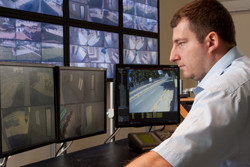Increasing public safety
Modern video surveillance equipment fails to detect hostile or threatening activity in crowded areas before an incident or attack. What is more, operators responsible for observing countless hours of real-time footage or analysing post-event footage are often subject to human error. Thanks to the EU-funded project 'Automatic detection of abnormal behaviour and threats in crowded spaces' (ADABTS), an automated detection system was designed to offer a more effective, accurate and cost-effective alternative to manual surveillance. The team started out by creating models for various kinds of threats and for abnormal behaviour at an airport, stadium and town centre. It devised techniques for detecting these threats and signs of unusual behaviour in video and audio surveillance data. Today's surveillance systems cannot effectively distinguish between normal and uncharacteristic, possibly threatening behaviour of masses or individuals, particularly prior to a harmful or destructive event. Researchers developed and tested visual and acoustic sensor processing and inference mechanisms that enable long-term monitoring of the location and behaviour of people close to an acoustic event. These include gunshots, breaking glass, screams and offensive songs. The sensors, algorithms and user interface work together to deal with problematic, crowded scenes, including tracking movement and flow patterns of multiple people, and recognising unusual sounds and then categorising them accordingly. In combination, these will be able to automatically reject the majority of recorded footage and just keep suspicious events. ADABTS will help security stakeholders in their fight against crime, terrorism and rioting through early detection and alerting of potential threats. European citizens will ultimately feel safer in public.
Keywords
Public safety, detection technology, surveillance equipment, abnormal behaviour, crowded spaces







